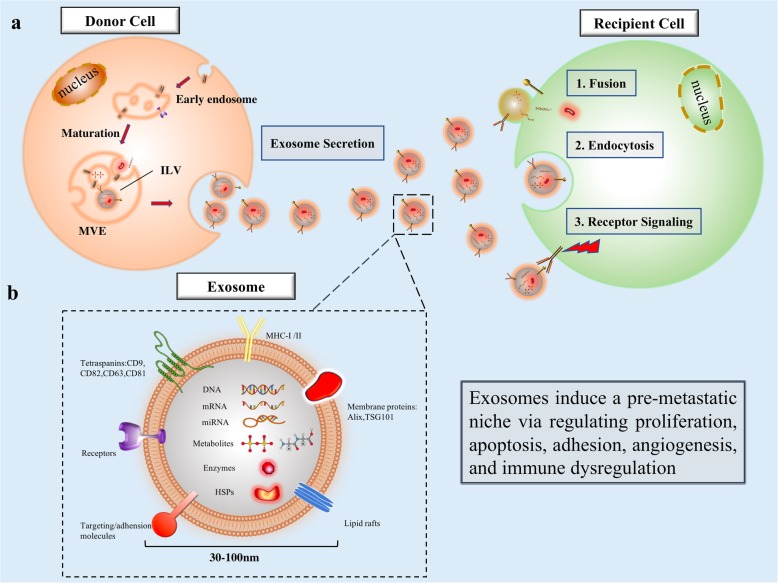Fig. 1.
a. The biogenesis of exosomes and the mechanisms involved in intercellular communication. The exosome is an intraluminal vesicle (ILV) formed by the inward budding of the endosomal membrane during the maturation of the multivesicular endosomes (MVEs) and then secreted after fusing with the cell surface. Uptake by recipient cells occurs via a three step processes: 1. membrane fusion with target cells; 2. endocytosis; 3. activation of surface receptors and signaling. b. Schematic diagram of the exosome. The exosome is a disk-shaped membranous vesicle with a diameter 30–100 nm, and carries a parental cell cargo including lipids, metabolites, proteins, nucleic acids (DNA fragments, mRNA, miRNA, etc.)

